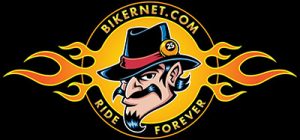I receive a strange call from time to time. “Meet me in Monrovia at 4:00 a.m.” The voice came in low tones. I arrived on a dark street, just down from a parked black-and-white. A decoy to keep local petty thieves on their toes, I locked the Bikernet van next to it, scrambled a block and ducked into a crew-cab pickup and we peeled out.

In the back of the truck, securely strapped in place under a large bulbous, no-window concept fiberglass shell designed by Yellow Freight, but never put into production, was this 1919 Henderson four. A very rare four built as World War 1 ended in 1918. Our mission was to deliver this rare Henderson from Los Angeles to Port Lavaca, Texas, on the Gulf of Mexico, post haste.


The year before 1919, 1918, Ignaz Schwinn purchased Henderson and moved the factory from Detroit to Chicago. Let’s hit the history from Richard Schultz’s book Hendersons, Those Elegant Machines:


In late 1911, in Detroit, Michigan, the Henderson Motorcycle Company produced a prototype four-cylinder motorcycle with belt drive. The company was headed by two brothers: president Thomas W. Henderson, Jr., who guided the business aspects of the company, and vice president William G. Henderson, the motorcycle designer and engineer. All motorcycles the company produced featured four-cylinder engines, which quickly gained a reputation for smoothness dependability, and durability. Henderson engines later saw service as powerplants for small aircraft.


The company itself did not fare so well, and by 1917, profits were not keeping up with financial liabilities. Ignaz Schwinn, looking to diversify the Excelsior motorcycle line and already working on a four-cylinder concept, entered into negotiations concerning the purchase of the Henderson Motorcycle Company and its assets.


By late October of 1917, Ignaz Schwinn and Thomas Henderson had drafted an agreement whereby the Henderson company assets would be purchased for the amount of $284,693 with the Excelsior company assuming liabilities totaling $288,091. Schwinn agreed to employ Tom Henderson as general sales manager and William Henderson as chief engineer. During the months following the agreement, all Henderson company equipment and assets were moved from Detroit to Chicago by railroad.



In December of 1918, Tom Henderson resigned from the Excelsior Company to enter the motorcycle export business, a move that both he and Ignaz Schwinn felt would be mutually beneficial. Bill Henderson remained with Excelsior until sometime in 1919, although an exact resignation date is not known. Upon his departure, Bill immediately began work on another four-cylinder design to be produced in Philadelphia as the Ace motorcycle. Tragically, Bill Henderson was killed there on December 11, 1922 while test riding the new Ace Sporting Solo.



By 1919 changes were beginning to appear in the Henderson line. The Excelsior internal-external brake was used, which made use of a different rear wheel. The new rear hub and double brake were referred to by Ignaz Schwinn when he accepted T. W. Henderson’s resignation. It was a part use by Excelsior, but it also eliminated the $2.00 royalty on Hendersons paid to T. W. Henderson. The 1919 model still had the 28X3 tires. GE generators were used on the Z-2 electric models.


This particular bike was one of many shipped to Australia for use in the WWI efforts. It recently returned to the United States and was restored in Los Angeles. Because of the war efforts and shipments overseas, 1919 Henderson fours are very rare, and as you can see, this is an amazing example. We delivered the biker carefully picked up the briefcase and started the 1,507 mile hike back to LA. We munched on trail mix and made it back in about 18 hours. Had to make a deposit…

